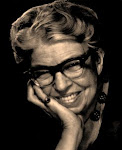"Anna Eleanor Roosevelt." The White House. 7 Jan 2009
Beth. "My Hero Project: Eleanor Roosevelt." 27 09 2007. The White House. 7 Jan 2009
"Eleanor Roosevelt."Collier's Encyclopedia . 20. 2002.
"Eleanor Roosevelt."Compton's by Brittanica. vol 20. 2007.
"Eleanor Roosevelt 1884-1962 ." 1999. PBS. 11 Jan 2009
"Eleanor Roosevelt Biography." Franklin D. Roosevelt Presidential Library and Museum. 7 Jan 2009
"Eleanor Roosevelt: First Lady of the World." Franklin D. Roosevelt Presidential Library and Museum. 8 Jan 2009
"First Lady Biography: Eleanor Roosevelt." National First Ladies Library. 8 Jan 2009
Roosevelt, Eleanor. "Eleanor Roosevelt Quotations." Worldofquotes.com. 11 Jan 2009
The Eleanor Roosevelt Papers."Wiltwyck School for Boys." Teaching Eleanor Roosevelt, ed. by Allida Black, June Hopkins, et. al. (Hyde Park, New York: Eleanor Roosevelt National Historic Site, 2003). http://www.nps.gov/archive/elro/glossary/wiltwyck-school-for-boys.htm [Accessed January 11, 2009].
Images:
Anna Eleanor Roosevelt. Divas The Site. 11 Jan. 2009
Anna Eleanor Roosevelt. National Archives, College Park, Maryland. Anna Eleanor Roosevelt. 11 Jan. 2009
Eleanor Roosevelt. 11 Jan. 2009
Eleanor Roosevelt. Danjor.com. 11 Jan. 2009
Eleanor Roosevelt. The Other Side of Falsified Genocide. 11 Jan. 2009
Eleanor and Franklin Roosevelt. 11 Jan. 2009
Eleanor Roosevelt and her dog. 11 Jan. 2009
Eleanor and kids. 11 Jan. 2009
Eleanor Roosevelt at Red Cross Cecil Club. War History Collection, Alexander Turnbull Library, Wellington.
Eleanor Roosevelt at Val-Kill. Leanor Roosevelt National Historic Site. Eleanor Roosevelt (1884-1962), diplomat, humanitarian. 11 Jan. 2009
Eleanor Roosevelt holds the Universal Declaration of Human Rights in 1948. 11 Jan. 2009
Eleanor Roosevelt in Australia, 1943. Women At Work. 11 Jan. 2009
Eleanor Roosevelt in Canada. Wikimedia. 11 Jan. 2009
Eleanor Roosevelt meets three women from the Bakery. The Window Shop. 11 Jan. 2009
FDR and Eleanor Graves. Flickr. 11 Jan. 2009
Franklin D. Roosevelt at Hyde Park in a Wheelchair. 1941. 11 Jan. 2009
Madame Chiang Kai-shek with Eleanor Roosevelt, the White House lawn, 1943. New Hampshire commentary. 11 Jan. 2009
Picnic at the Wiltwyck School for Boys 1954. 11 Jan. 2009
School Portrait 1898. 11 Jan. 2009
Young Eleanor and family. 11 Jan. 2009











